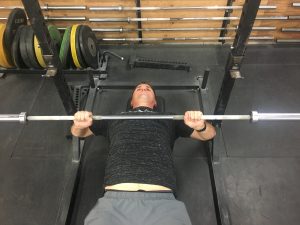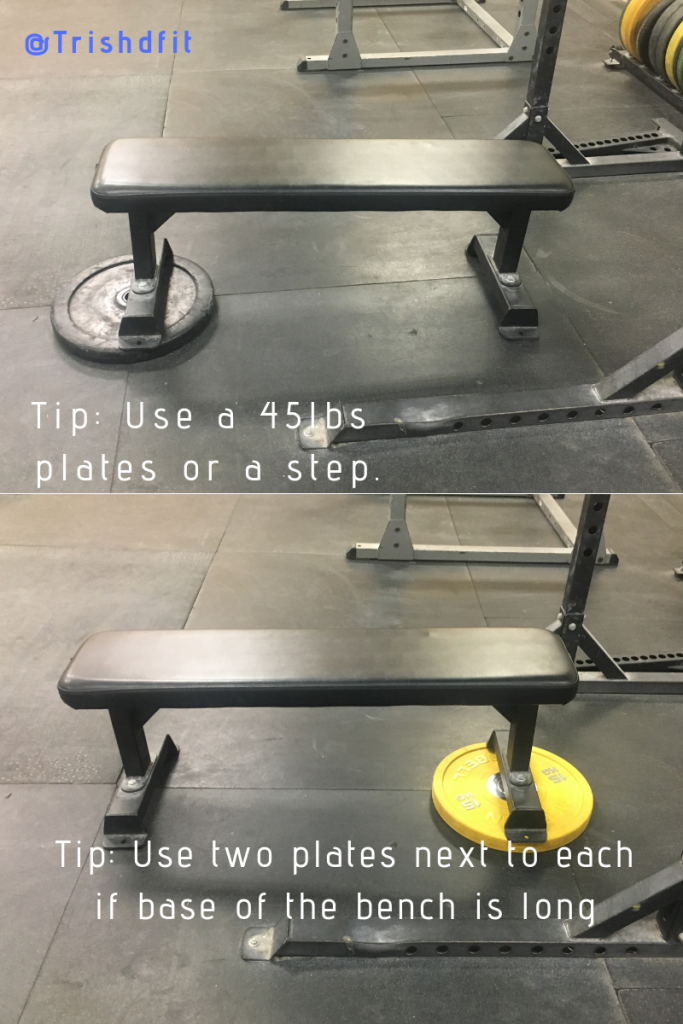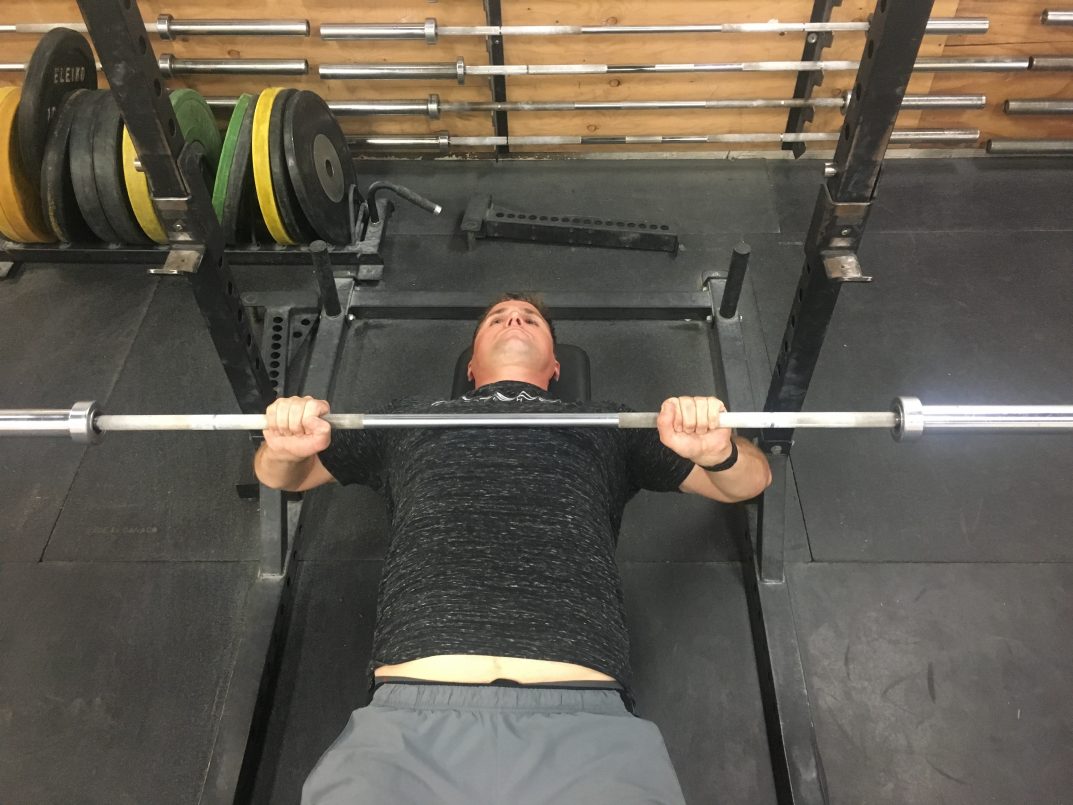Note: This post is a reiteration of an article in the #21DaysMvtMob. Get more like this when you sign up & improve your squat, deadlift, overhead press, and pull-up!
The barbell bench press is one of those lifts that I want to love but dread training. A previous shoulder injury and nagging pain that went on for years has made me extra cautious with this lift. Plus there’s always the fear of “Will this fall on my face, break my nose, and ruin my chances of ever finding a husband?”
Yes, I’m that dramatic.

The reality is, the bench press is notorious for causing aches and pains around the shoulders for many lifters. It’s more technical than most people think and yes, not having a spotter is dangerous and scary. But unless you are training for a powerlifting meet or the NFL Combine, you don’t need to bench press with a barbell in order to get strong. There are other safer and just as effective alternatives!
However, if you experience pain or discomfort when you bench press there’s a good chance that you:
A) Lack the proper mobility and stability to do it safely
B) Have crappy technique
C) Are already overtraining the chest and shoulders
D) All the above
Knowing where you’re lacking (or slacking) is the first step in helping you bench press pain-free, but afterwards, it’s about finding alternative exercises or small tweaks to help save your shoulders from pain (and ultimately, your beautiful face).
3 Tweaks for A Safer Bench Press
Whether or not you have shoulder pain or discomfort when you lift, it’s worth training the bench press in different ways so you can still benefit from the movement, get strong, and feel confident should you return to the traditional barbell bench press.
Here are three programming tweaks I’ve made for myself and my clients to get them to a safer, stronger bench press:
1. Change the Angles of the Bench
Whoever said you had to bench press with a flat bench was seriously mistaken.
Sure, using a flat bench and lifting 90-degrees overhead hits the pecs and anterior deltoids quite a bit, but if you have a history of shoulder pain and this movement bothers you, why continue doing it?
Instead, experiment with the degree of your bench incline or decline so you can continue to bench press safely! A 45-degree angle is typically easier to set up and targets the upper chest and deltoids more so than a traditional flat bench. However, Dr. John Rusin notes that slight angles of 10-15 degrees is super beneficial because it puts the shoulders in the most optimal, pain-free position for pressing. Plus, you still get the strength development of the press!
I have personally moved away from intense barbell benching to incline pressing with dumbbells instead. This allows me to develop my upper body strength without creating more pain in my anterior shoulder and keeps me strong enough for traditional benching when I’m ready to do so.
Here are two ways to set it up (I used 15kg plates for this but you can get a thicker plate or use a step):

I admit that this is a drag to set-up initially but if shoulder health is a concern, then it’s worth the extra minute to prop your bench in either the incline or decline position. (Pro tip: Get off your phone for 30 seconds and use that time to set up properly).
Unless you’re a powerlifter, there is no need to use the flat bench for this lift. You can still benefit from the movement pattern at different angles and I’ve personally played around with various degrees to keep myself challenged and pain-free!
2. Use a primer exercise before the lift
Ideally, you’re doing a really focused, dynamic warm-up before your upper body workouts. If you have cranky shoulders, you’ll likely have an extended warm-up with a few additional corrective exercises. In my free warm-up guide, I break down the exact warm-up to prep yourself for benching.
But if you’re warming up just fine and still need something extra to make this a safer lift for you, I encourage using a corrective or primer exercise right beforehand. I picked up this tip from Dr. John Rusin and have found it extremely powerful for myself and clients.
It’s like an extension of the warm-up specific to the main lift of the day (the bench press in this case), with the sole purpose of improving muscle activation around the scapulae, bringing more blood flow to the area, and keeping your shoulders moving and feeling good.
Keep it simple: Performing a cable or band face pulls, or Pilates chest expansion to target the upper back and posterior deltoids for 3 sets of 10-12 reps. The goal isn’t to go super heavy here; save that for the actual lift.
3. Change grip and elbow setup
The biggest game changer for me was switching my grip in the bench press to something a bit narrower.
If you’re using a barbell, you can experiment with a closer grip (more tricep focused) set-up to see if that helps, or go wider if needed. You can also ditch the barbell completely and use dumbbells instead, which gives you more flexibility in terms of grip. The neutral grip (with palms facing in) is the simplest change for pain-free pressing and is ideal for muscle and strength development.
Another important but overlooked setup change to consider is your elbow path in the bench press.
Strength coach Eric Cressey has said many times that “wherever the arms go, the scapulae goes.” If you tend to flare your elbows out to 90-degress at the bottom of the bench press, this forces the scapulae to rotate upward, putting it under more stress.
If you tuck the elbows in about 30-degrees from the torso, however, the scapulae doesn’t have to move that much, and makes bench pressing safer and more comfortable for your shoulders. Just like the length of the yellow line in the top photo,it’s a lot shorter than the bottom photo.

This looks like a very minor, insignificant detail but that’s the whole point! Once you’ve learned how to bench press and how to prepare your body for this type of work, the rest is all about details! And it is significant because even a few degrees can mean the difference between more shoulder pain or pain-free pressing!
Loved this post? Sign up to join the #21DaysMvtMob – a free education series to make you lift better, recover faster, and upgrade your strength game!
Join 21 Days of Movement and Mobility

